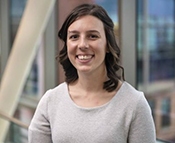
Health Care Homes Sustainability Roadmap
Partnerships
Many Minnesotans do not have easy or equitable access to care. There is growing recognition of the impact of social factors influencing health and the importance of community partnerships to address them.
Traditional and non-traditional partnerships are vital to sustaining the HCH model of care and improving outcomes across populations. Strategic partnerships strengthen clinic capacity, extend reach into communities, support resource sharing, and enhance patient-centered, whole-person care.
Strategies
Effective and sustainable partnerships expand the reach and impact of Health Care Homes by strengthening care coordination, improving access to community resources, and aligning services across sectors. By cultivating trusted relationships with both traditional and non-traditional partners, clinics can better support whole-person care, address health-related social needs, and improve outcomes for the populations they serve.
- Internal & Interdisciplinary Team Alliances
- Foster strong partnerships within the clinic via intentional alignment between clinicians, care coordinators, behavioral health specialists, community health workers, administrative staff, and leadership.
- Establish regular interdisciplinary meetings and shared performance goals to align care planning and outcomes.
- Community & Social Service Collaboration
- Build formal and informal collaborations with community-based organizations (CBOs), social service agencies, housing supports, food security programs, and behavioral health partners to address social determinants of health.
- Co-design referral pathways and shared workflows so patients navigate care more seamlessly across clinic and community settings.
- Health Plan & Payer Engagement
- Engage health plans and payers in partnership conversations to align incentives, support care coordination reimbursement, promote value-based contracting, and improve overall care quality.
- Leverage HCH certification status in insurer directories and contracting conversations to signal quality and enhance patient choice.
- Cross-Sector Partnerships
- Expand partnerships with local public health, schools, employers, and civic organizations to reinforce preventive health efforts and community engagement.
- Collaborate on population health initiatives that align community needs with clinic services.
- Measurement, Shared Goals, & Accountability
- Define shared goals with partners and co-measure impact where feasible (e.g., reduced emergency use, improved chronic condition outcomes).
- Use data dashboards and regular learning sessions to align priorities and adjust strategies collaboratively.
Resources
These resources offer practical tools, evidence-based frameworks, and actionable guidance to help Health Care Homes build and sustain strong cross-sector partnerships. They support clinics in identifying community needs, developing shared goals, improving communication, and strengthening coordinated care with organizations across the health and social service landscape.
- Community-Clinical Linkages for the Prevention and Control of Chronic Diseases: A Practitioner's Guide (PDF) | Centers for Disease Control and Prevention (CDC)
- Community Collaboration | Americal Academy of Family Physicians (AAFP)
- Care Delivery Transformation Framework Linking Clinical to Community | American Hospital Association (AHA)
- Asthma In Minnesota: A Strategic Framework 2026-2030 (PDF) | Minnesota Department of Health (MDH)
- Minnesota's Action Plan to Address Cardiovascular Disease, Stroke, and Diabetes 2035 (PDF) | Minnesota 2035 Plan
- Strategies and Solutions | County Health Rankings & Roadmaps
- Health Equity Resource Library | Minnesota Department of Health (MDH)
- Call to Action: Addressing Health-Related Social Needs in Communities Across the Nation (PDF) | U.S. Department of Health and Human Services (HHS)
- The importance of cross-sector partnerships in enabling better health outcomes: A Viewpoint | Chief Healthcare Executive
- What are Minnesota's Community Health Boards Working on Right Now? | Minnesota Department of Health (MDH)
- Minnesota Statewide Health Assessment | Minnesota Department of Health (MDH)
Stories

Like many primary care organizations emerging from the COVID-19 pandemic, Stellis Health faced unprecedented workforce shortages. Applications for LPN and CMA positions had dwindled, and staffing levels had reached an all-time low. To keep care accessible and team-based, Stellis created the Clinical Support Team Specialist (CSTS) role—an innovative position designed to support credentialed clinical staff by taking on essential tasks that did not require licensure. While this stop-gap measure helped stabilize operations, leaders recognized the need for a more sustainable solution.
The turning point came when Stellis identified a partnership opportunity with Stepful, an online training program for medical assistants. “If we can’t hire trained staff, we’ll train them ourselves,” the team concluded. This collaboration led to the creation of an Earn as You Learn pathway, giving CSTS employees the chance to complete their Certified Clinical Medical Assistant training while continuing to earn income and remain part of the care team.
Launching the program required careful coordination. Stellis worked closely with Stepful to integrate online coursework into the CSTS workday, allowing employees to progress academically without sacrificing financial stability. By covering tuition costs and establishing transparent expectations around full-time status and post-graduation employment, Stellis ensured the program was sustainable for both staff and the clinic.
A particularly complex challenge was arranging the required 80-hour externship. These hours were unpaid, but Stellis took a flexible, person-centered approach: some participants completed all hours at once, while others spread them out to continue earning income. This adaptability reinforced Stellis’ commitment to whole-person support—for both patients and staff.
The impact of this partnership has been profound:
- Building your own workforce creates ripple effects. Many program graduates are now pursuing RN degrees, illustrating how a partnership can expand opportunities far beyond the clinic.
- Choosing the right partner matters. Careful selection of Stepful ensured alignment with Stellis’ needs and quality standards.
- Blending online learning with hands-on experience works. Virtual coursework combined with in-clinic practice strengthens skills, confidence, and readiness for patient care.
For other clinics considering similar approaches, Stellis offers clear advice: dedicated training infrastructure and structured mentorship are essential. Even during staffing crises, investing in partnerships for learning pathways ensures a reliable pipeline of future care team members.
Today, Stellis Health’s Earn as You Learn approach stands as a powerful example of how strategic partnerships can strengthen both care coordination and workforce sustainability. By investing in people, meeting learners where they are, and embracing innovative collaborations, Stellis is not only addressing immediate staffing challenges—they are shaping the next generation of primary care professionals.
The HCH program thanks Stellis Health for sharing their experiences and insights.
For more than 125 years, Gillette Children's Hospital has focused its efforts on some of the toughest challenges in pediatric medicine – brain, bone and movement conditions that require specialized care. As a global leader in care and research, one of Gillette’s core missions has been to discover new treatment options for children who have disabilities.
Recently, Gillette concluded work on a five-year federal grant to support the implementation of parent advisor roles within its research process improvement team. The grant included financial reimbursement and training for parents serving in these positions.
“As a researcher, it was an amazing model,” said clinical scientist Rhonda Cady, RN, PhD. “Family Voices of Minnesota helped our clinical team learn how to work collaboratively with parent advisors and the model ended up being so impactful that we now believe it is critical to have paid parent advisors as part of our complex care program process improvement team.”
Gillette’s success with parent advisors led to the development of the Family Engagement in Research (FER) program. FER recruits, hires, trains, and compensates patients and parents for their lived experience expertise. After some training, program participants then work with Gillette research and clinical staff as equal partners on research projects and as advisors to organizational programs.
 “Our parent advisors are essential to all that we do,” Tori Bahr, MD, MedPeds Complex Care confirmed. “I think we have all learned so much over the last five years having them as a part of our clinic.
“Our parent advisors are essential to all that we do,” Tori Bahr, MD, MedPeds Complex Care confirmed. “I think we have all learned so much over the last five years having them as a part of our clinic.
“We are currently conducting a mapping session on how complex care works and how patients come in,” Bahr added. “The goal is to determine what to do when they're ready to move on from here and how we graduate them from complex care. Parent advisors are at every single meeting.”
Bahr noted that the process began with research and clinical staff asking about the patient experience. Things have now progressed to the point where staff proactively ask how a process works behind the scenes and how staff can make it work better.
“As a group, I feel like we can't do anything without running it by the parent advisors,” Bahr acknowledged. “Now we consider if we should make a change before first getting input from our parent advisors, knowing that their input is needed. It’s been transformative to learn that just because it works great for the provider, it doesn't necessarily mean that it's going to translate into great care.”
Bahr now considers parent advisors and their role to be woven into the fabric of the clinic’s work.
“Ultimately, I can't praise our parent advisors enough,” Bahr concluded. “They are incredible human beings.”

Rhonda Cady, RN, PhD